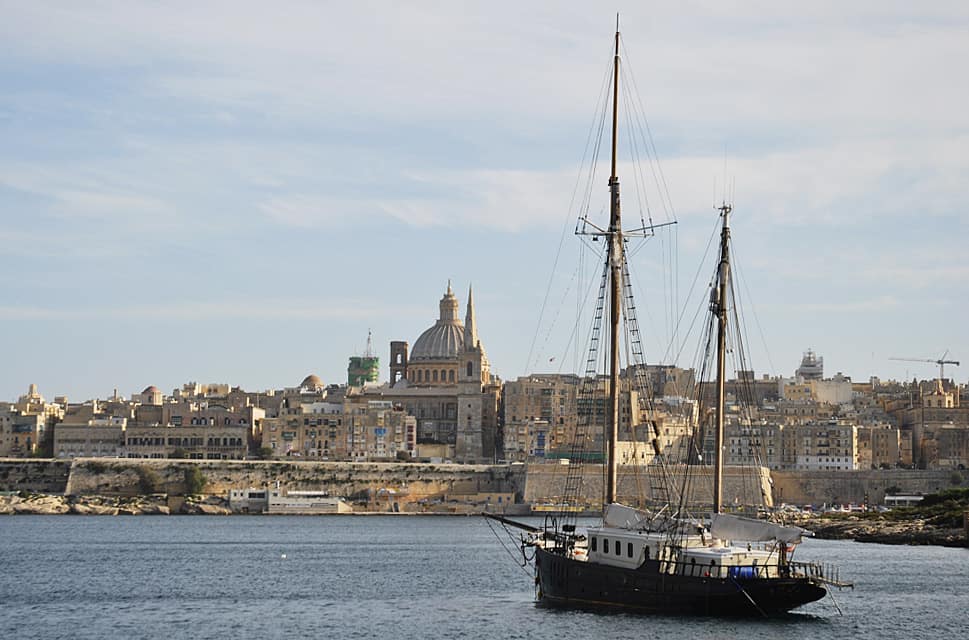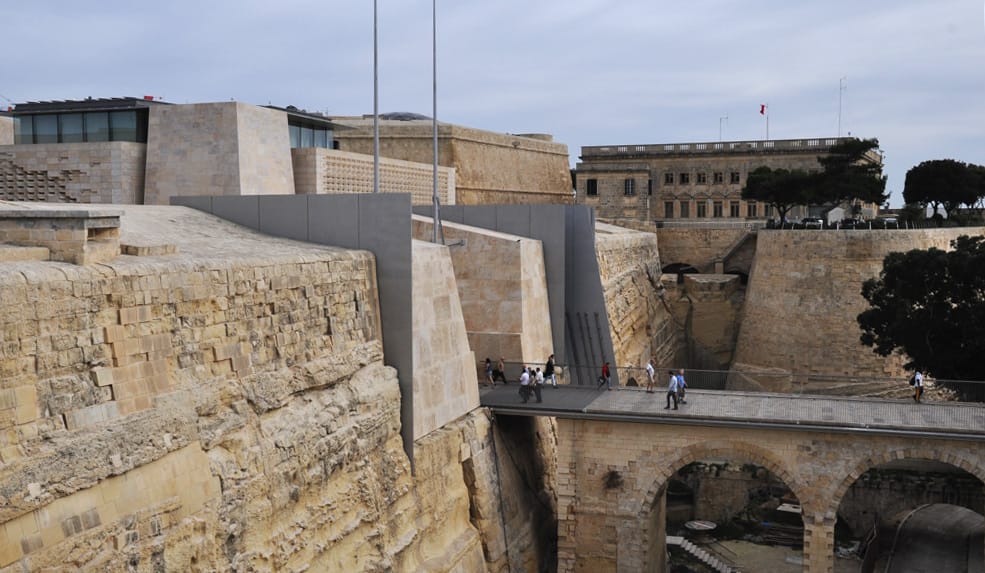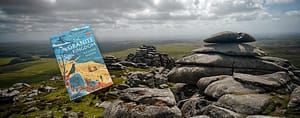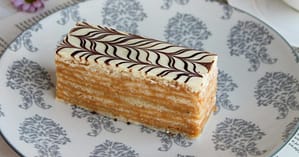Back in the 1950s a young newly wed and her naval officer husband moved to the Island of Malta and immediately fell in love with the place. They settled in a quiet suburb of the capital Valletta and stayed for nearly three years. This year that same couple returned for a few days to the city they called home as a monarch and her consort. This time round it was not a navy wife following her officer husband to his posting but the naval officer husband (retired) following his wife as Queen and Head of the Commonwealth.
In November 2015 I arrived in Malta and, like the Queen, immediately fell in love with the island. Two things are certain: I will not be returning as monarch and I will not wait as long to return.
I will write about several aspects of my stay in Malta in future posts but I want to start with some of my Valletta experiences. The city of Valletta is a UNESCO World Heritage Site and is the European Capital of Culture 2018.
Valletta has suffered much since it was built as a defensive city by the Knights of Saint John after the Great Siege in 1565. Designed by military architects Old Valletta is contained within impenetrable defensive walls and bastions. This and the steep streets, and steps make it an eminently walkable city and very unfriendly to motor vehicles.

Arrive by ferry from Sliema
For me, the best way to approach Malta’s capital is on the Sliema-Valletta ferry. As you take the five minute trip across Marsamxett Harbour you are rewarded with the classic skyline of Valletta with the large dome of the Manoel Theatre. The arrival in the small harbour at the foot of the massive defensive Salvatore Bastion is almost intimidating and sets the scene for this fortress city.

The City Gates area
Many people choose to enter Valletta by the impressive main gates so I headed up there through the narrow streets laid out in a grid fashion.
The City Gates were the main entrance into Valletta and were defended by a deep moat. They were in much need of a facelift and renovation. The Italian architect Renzo Piano has sympathetically redesigned the gates and the area immediately behind them. Either side of the massive gateway gigantic shards of steel are embedded in the 16th-century walls like shrapnel from some invading force. Or perhaps they are discarded leftovers from the London Shard which he also designed. Renzo Piano has managed to blend this minimalist modernity into the original defensive architecture that has remained for so long. Apparently, he did have to remove some much hated, meritless 1960s renovations, but no one appears to be shedding any tears over that.

Behind the gates there used to be a car park. In this space is a modern building of straight lines and sharp angles a purpose-built home for the Maltese legislature. Faced with the local Maltese stone it blends in surprisingly well with the Renaissance and Baroque facades around it.

Beside it are the ruins of the Opera House. Designed by Edward Middleton Barry who also designed the Royal Opera House, Covent Garden it became something of an icon for the residents of Valletta. It was severely damaged during the incessant bombing by the Luftwaffe in 1942. The Maltese couldn’t bear to tear the remains down nor could they agree on what to do with them. It remained a ruin for 60 years until Piano created an open-air theatre within what was left of it.
Stroll along Republic Street
This is the backbone of Valletta and is a dictionary of architectural styles that have defined the city. It is also lined with shops and boutiques and a couple of museums. part way along it opens out into the three central squares Valletta. The first is the narrow Great Siege Square with the Co-cathedral taking up one side. Next is Republic Square filled with cafes. Finally, you reach large open St George’s or Palace Square.

Visit St John’s Co-cathedral
Malta is a single dioceses and when the Knights of Saint John moved the capital Mdina to Valetta to be close to their ships they built another. They applied to the Pope at the time and unusually were granted a second cathedral in the dioceses; hence the title co-cathedral. The one in Valetta is dedicated to Saint John the Baptist and houses a painting by Caravaggio of the beheading of the aforementioned saint.

There were eight langues or orders of knights and each one was given a chapel in the new cathedral. Each langue tried to outdo the others in the decorations, frescoes and paintings with the result that the whole cathedral is an opulent Baroque extravagance of gold, marble and paintings. Some say it is over the top, others are in awe of its beauty. That is for the individual to decide but it is certainly a place that all visitors to Valletta should see.
The exterior is at odds with the interior. It is elegantly simple in its beauty and can easily be missed or mistaken for a simple church of no significance. Indeed when looking at the skyline of Valletta many mistakenly assume the great dome that dominates it is the cathedral.

Have a coffee and cake at Caffe Cordina
Valletta is full of the legacy of the British and that of its nearest neighbours, the Italians. In Republic Square, both exist comfortably side-by-side. The pavement cafes that fill the square sit happily with the pillar box and the bright red telephone box that for so long graced the streets of Britain.

Cafe Cordina was established in 1837 though not in its current premises. These were originally the Treasury of the Order of St John. Since then they have been government offices and a hotel. In 1944, severely damaged by the blitz of Malta in 1942, it was taken over by Caffe Cordina.

Most notable is the unique vaulted ceiling decorated by the Maltese painter Giuseppe Cali depicting the many diverse periods of Malta’s history. The Cafe consists of elegant tea rooms, a gelateria, pasticcera, bar and an outdoor cafe. The pastries here are iconic. Eaten in the tearoom or in the sun splashed square they are an experience, with more than a hint of Italian cafe culture, that should not be missed.
Republic Square touches corners with St George’s Square. This is a wide open square dominated by the…
Visit the Palace of the Grand Masters
This palace was the residence of the Grand Master, supreme head of the Order of the Knights of St John for over two centuries. There are magnificent rooms to visit along with the armoury and rich tapestries. It was here that the Grand Master would greet foreign envoys and important guests. Until recently it was also where the Maltese Parliament met.
The impending Royal Visit and a great deal of refurbishment meant there was little opportunity for me to visit. However, that will be remedied on my next visit.
From here you can continue down Republic Street to the Casa Rocca Piccola a 16th century palazzo or head down to the Teatro Manoel and the Theatre Museum. I chose to head down to Victoria Gate to walk around the battlements.

Walk the Battlements
The city is surrounded by defensive walls and bastions that are all but impregnable. The views across the Grand Harbour to the Three Cities on one side and the Marsamxett Harbour on the other are the main reason for walking around the walls.


The highest point, just above Victoria Gate, is the Upper Barracca Gardens. These overlook the Grand Harbour and are where you find the Lascaris War rooms where the defence of Malta was conducted from as well as being the control centre for Allied forces in the Mediterranean. The invasion of Sicily was also conducted from these rooms.

Further around the walls are the Lower Barracca Gardens with a great view of the Grand Harbour entrance. The defensive complex of Fort Elmo that guarded the seaward side, the Knights infirmary and the Malta Experience are all here and worth visiting.
The best time, in my opinion, to walk the walls is late afternoon and evening. The light of the sun bathes the fortifications, the harbour and the packed houses of Valletta in light that brings out the honey colour of the local stone used to construct much of Valletta.
Wander the streets of the city
To get a real feel of the city try wandering the streets off the main drag of Republic Street. From Republic Street and Merchant Street most of the narrow streets head down hill towards the sea. Being set out in a grid pattern means that at least some of the streets are level for some of the time.

Look up and you are likely to see the gallerija for which Valletta and other towns and cities in Malta are famous. No one knows the exact origin of these covered balconies but it is thought that the were probably first added on the palace and everyone wanted what the palace had and began adding them to their more modest homes. Valletta has plenty to find in different styles and colours.

There are many more places to visit and experiences to have that are not covered in this post. It is one reason I will return to Malta; to explore those parts of Valletta I missed the first time around. There are more than enough to fill a couple of days. Another reason I plan on a return visit… I want more cake and coffee at Caffe Cordina.
Have you visited Valletta? What are your highlights? Do share in the comments below and if I have not visited them I will make sure I do next time.
For more information visit the Visit Malta website www.visitmalta.com



